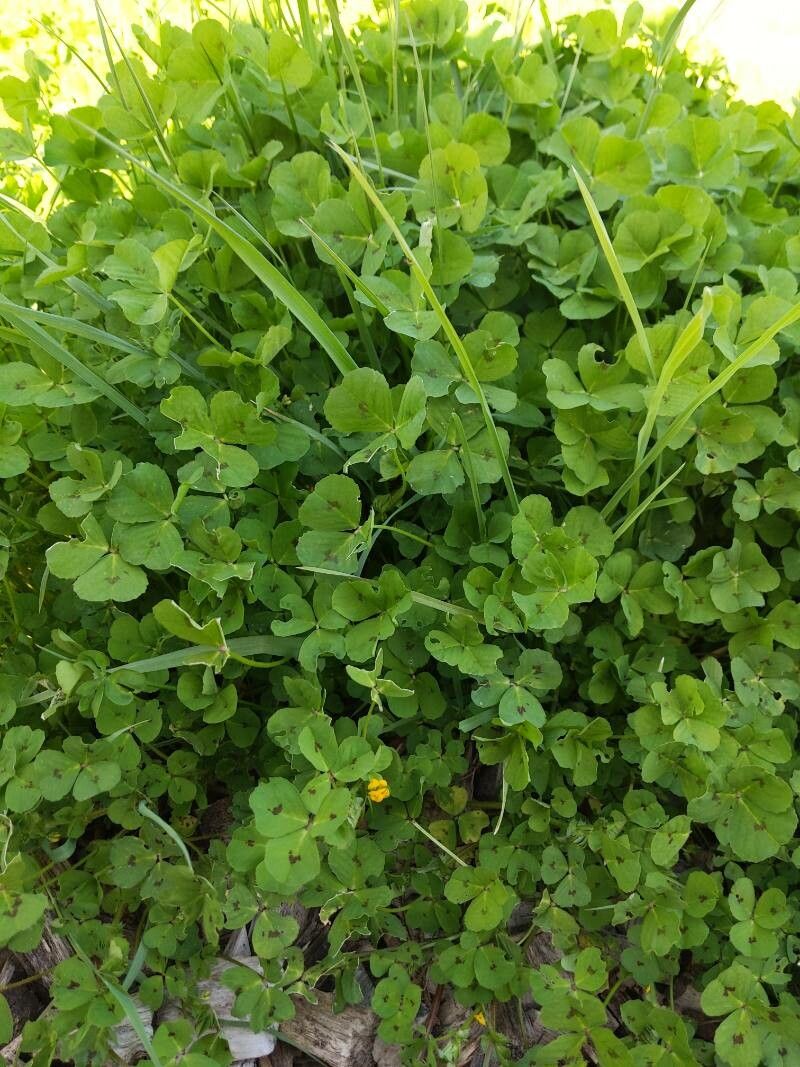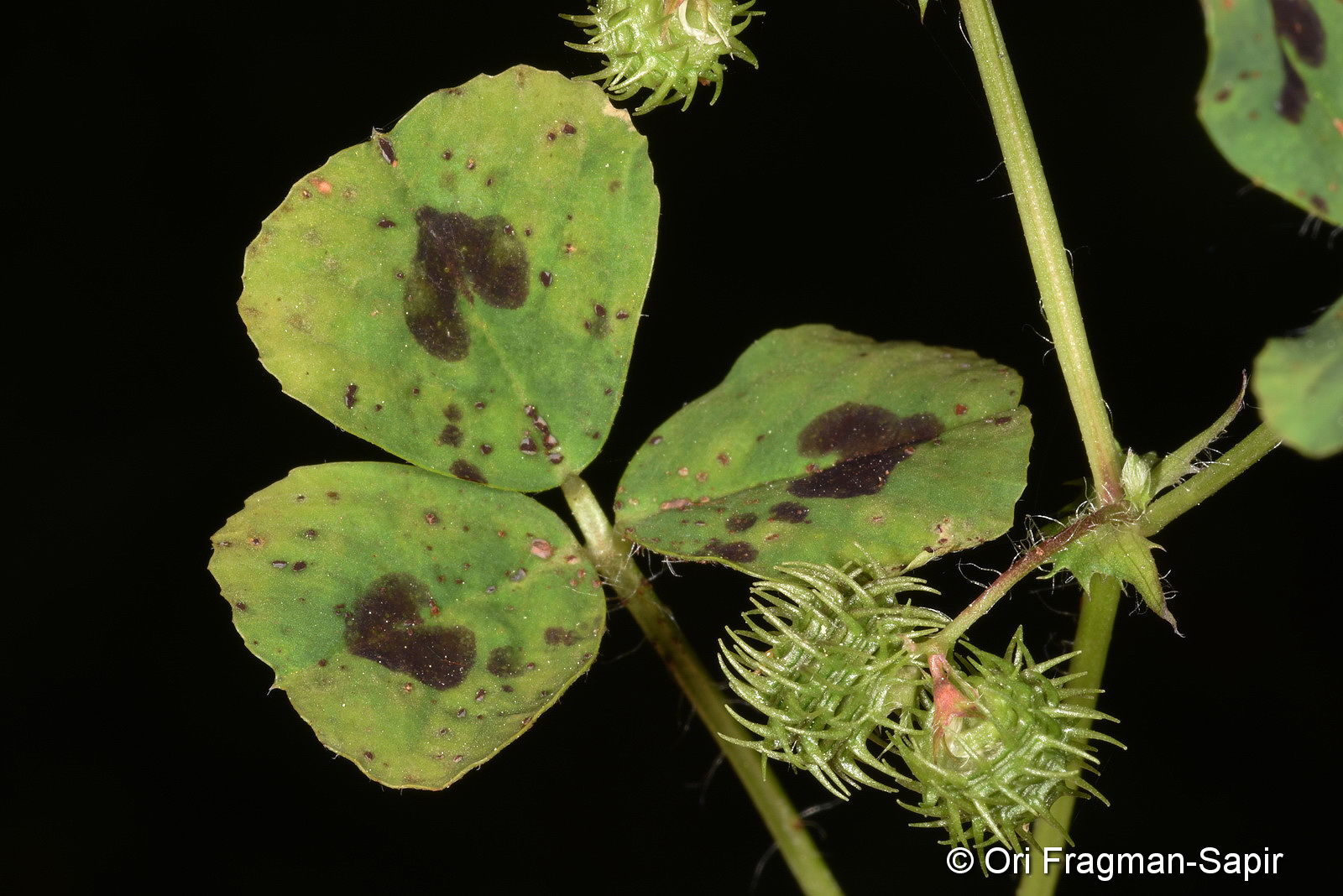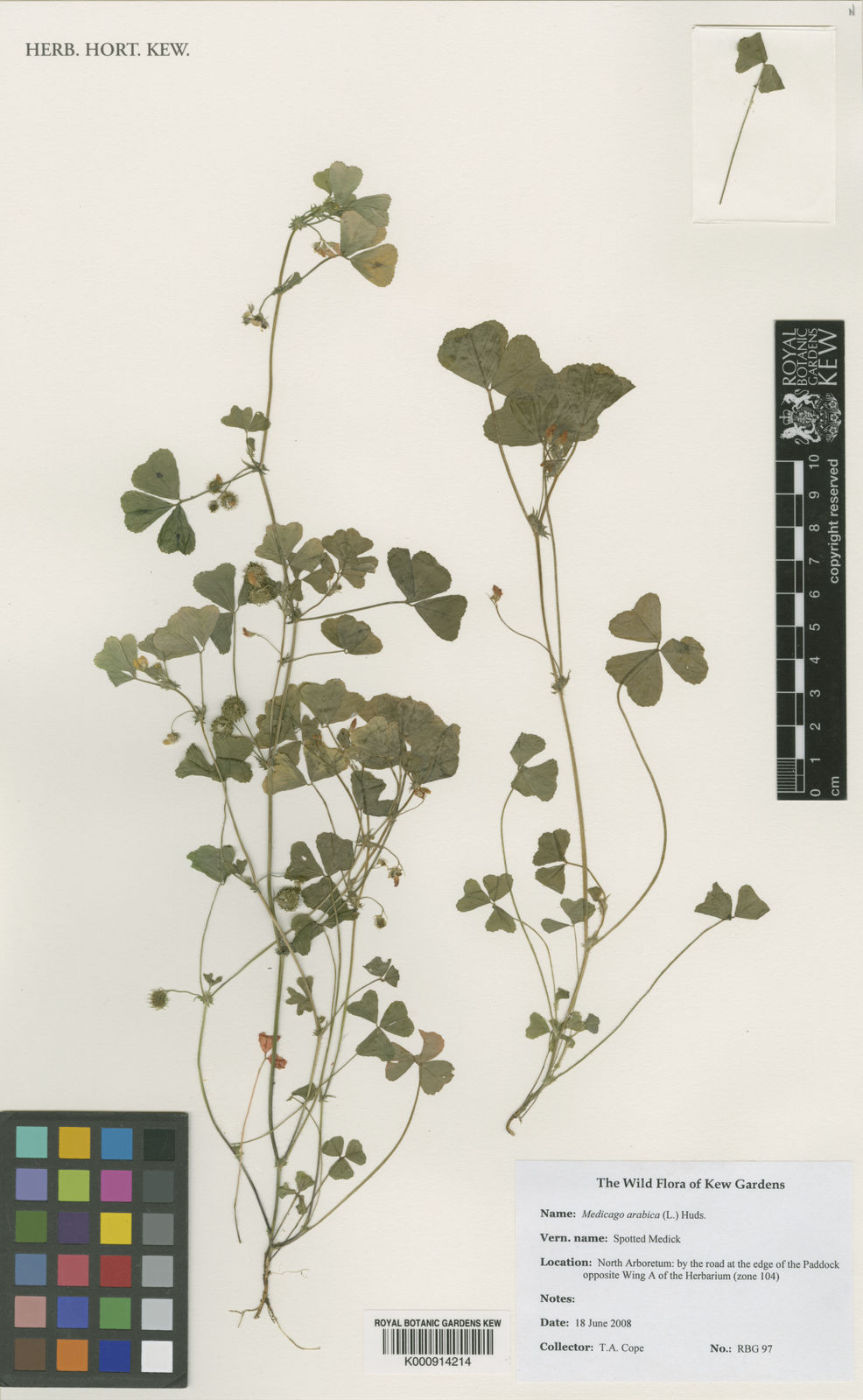Arabian Medick
medicago arabica
Also known as: ["Arabian Clover","Arabian Alfalfa"]
Overview
A small annual legume native to the Mediterranean region, known for its trifoliate leaves and yellow flowers.
Benefits & Perks
["drought tolerant","wildlife attractant (bees, butterflies, birds)"]
Botanical Classification
| Phylum: | Magnoliophyta |
| Class: | Magnoliopsida |
| Order: | Fabales |
| Family: | Fabaceae |
| Genus: | Medicago |
| Botanical Name: | Medicago arabica |
Plant Characteristics
Basic Information
- Category: Herbs & Weeds
- Suitable Location: outdoor garden bed in temperate climates, or container in cooler regions
- Suitable For:
- Is Weed: No
- Allergenicity: low
Environmental Needs
- Climate: {"temperatureRange":"5–35°C"}
- Hardiness: {"zones":"7–10"}
- Misting: rarely required, only if ambient humidity is very low
- Drainage: Fast-draining to prevent waterlogging.
- Soil Type: Well-draining loamy soil with organic matter.
Maintenance Level
- Maintenance Level: low
- Toughness Level: moderate
- Pruning Frequency: As needed, typically every 6–12 months or after flowering.
- Pruning Intensity: Moderate; remove up to one-third of growth if overgrown.
Care Details
Ideal Sunlight Coverage:
Full sun (6–8 hours/day); tolerates partial shade in intense summer heat.
Sunlight Tolerance Tips:
Acclimate gradually if moving from shade to sun; protect from harsh midday sun in summer; ensure good air circulation if grown indoors.
Care Requirements
Care Difficulty
easymoderate
Sunlight
full sun to partial shade
Rotate plant for even light exposure; use sheer curtains to filter intense sun; avoid placing near heat sources.
Watering
every 7–10 days during active growth, reduce in winter
Water thoroughly until it drains from the bottom; allow soil to dry between waterings; avoid overwatering.
Soil
well-drained, loamy soil with moderate organic content
pH: Slightly acidic to neutral (6.0–7.0).
Use a mix of potting soil and perlite; avoid heavy clay soils; ensure pots have drainage holes.
Temperature
Prefers 60–85°F (15–29°C); can tolerate cooler temperatures but avoid frost.
Protect from frost; avoid sudden temperature swings; maintain consistent warmth during active growth.
Fertilizing
every 4–6 weeks during growing season
Apply fertilizer after watering; flush soil occasionally to prevent salt buildup; stop fertilizing in dormant periods.
Propagation
Methods
Seed or stem cuttings.
Step-by-Step Propagation Guide
- Prepare medium.
- Plant seeds or cuttings.
- Maintain moisture.
- Provide warmth.
- Monitor for roots.
Best Time: Spring or early summer when temperatures are mild.
Environment
Warm (70–75°F), high humidity, and bright indirect light.
Medium
Well-draining potting mix with perlite or sand.
Hormone
Optional, but rooting hormone can improve success rate for stem cuttings.
Timeline
Seeds: 2–4 weeks to germinate; cuttings: 3–6 weeks to root.
Tools Needed
Pruning shears, rooting hormone, small pots, misting bottle.
Quick Tips
Use fresh seeds for best germination; keep cuttings out of direct sun; maintain consistent moisture.
Pruning & Repotting
Pruning Guide
Method
Pinch back tips for bushier growth; cut just above a leaf node or bud.
Pruning Plan
Prune to maintain shape, encourage bushier growth, and remove dead or diseased parts.
Tools
Pruning shears, sterilizing solution, gloves.
Checklist
Sterilize tools; prune dead/damaged parts; shape as desired; clean up debris.
Repotting Guide
Best Season
Spring, before active growth begins.
Pot Size
One size larger pot (e.g., +2 inches in diameter).
Method
Remove plant gently; trim roots if needed; place in new pot with fresh soil; water lightly.
Suggestions
Repot every 2–3 years or when roots fill the pot; beneficial for growth and soil health.
Checklist
Choose appropriate pot; prepare new soil; handle roots carefully; water after repotting.
Advanced Care Tips
Watering Mastery
Watering Checklist
Check soil moisture; water deeply; ensure drainage; adjust for season.
How to Apply Water Properly
Water at the base of the plant, ensuring moisture reaches the root zone; water early in the day to minimize evaporation; ensure excess water drains away to prevent waterlogging.
Watering Schedule Tips
Water deeply once the top inch of soil feels dry; reduce frequency in winter to prevent root rot.
Soil Improvement
Add perlite or sand for drainage; incorporate compost for fertility; ensure good aeration.
Temperature Stress Management
Signs of Temperature Issues
Wilting, yellowing leaves, stunted growth, or bud drop.
Cold Stress
Growth slows or halts; leaves may turn purple or brown; risk of frost damage.
Solution: Move to a warmer location; provide frost protection; reduce watering in cold periods.
Hot Stress
Leaves may scorch, wilt, or drop; growth may slow under extreme heat.
Solution: Provide shade during peak heat; increase humidity; water more frequently but avoid waterlogging.
Fertilizing Guide
Fertilizing Checklist
Check growth stage; dilute fertilizer; apply to moist soil; avoid contact with leaves.
Fertilizing Method
Use a balanced liquid fertilizer diluted to half strength every 4–6 weeks during growing season; avoid fertilizing in winter.
Common Problems & Solutions
Toxicity Warning
Cats
Non-toxicMedicago arabica is not toxic to cats. The plant does not contain known substances that are harmful to feline health.
🌿 Toxic Parts:
⚡ Toxic If:
if eaten
Dogs
Non-toxicMedicago arabica is not toxic to dogs. The plant does not contain known substances that are harmful to canine health.
🌿 Toxic Parts:
⚡ Toxic If:
if eaten
Humans
Non-toxicMedicago arabica is generally considered non-toxic to humans. It is a leguminous plant that is not known to produce toxic compounds harmful to human health.
🌿 Toxic Parts:
⚡ Toxic If:
if eaten
Frequently Asked Questions
Q: Is Medicago arabica edible?
A: Yes, it is non-toxic and can be used as forage for livestock.
Q: Does it require much water?
A: No, it is drought-tolerant and thrives in dry conditions.
Q: Does it attract wildlife?
A: Yes, it attracts bees and butterflies due to its flowers.
Quick Reference
| Family: | Fabaceae |
| Care: | easy |
| Light: | full sun to partial shade |
| Water: | every 7–10 days during activ |
Get Expert Care Tips
Download the Plantious app for personalized care reminders and plant identification!
Google Play App Store








